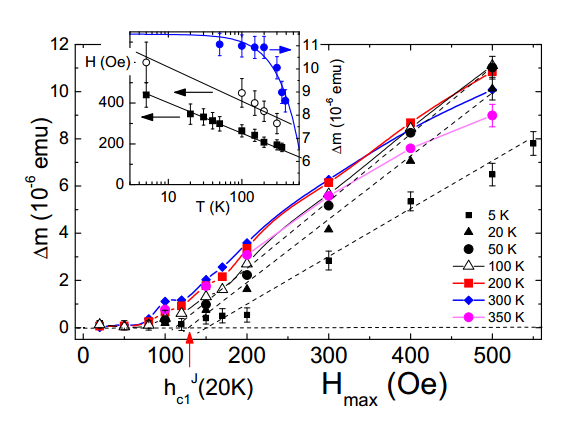Room Temperature Superconductivity Found in Graphite Grains
Water-soaked grains of carbon superconduct at room temperature, claim a team of physicists from Germany
Here’s an interesting recipe. Take a spoonful of graphite powder and stir it into a glass of water. Leave for 24 hours at room temperature and then filter the powder. Finally, bake overnight at 100 degrees C and allow to cool.
And voila! A material that superconducts at over 300 kelvin–room temperature. At least that’s the claim today from Pablo Esquinazi and buddies at the University of Leipzig in Germany.
If that sounds too good to be true, it’s worth taking a look at the claim in more detail since there are more than a few caveats.
This story is only available to subscribers.
Don’t settle for half the story.
Get paywall-free access to technology news for the here and now.
Subscribe now
Already a subscriber?
Sign in
First, this is not a conventional bulk material. The claim from Germany is that the superconductivity occurs at the interface between grains of graphite after they have dried out.
So that’s a surface effect which involves only a tiny fraction of the total mass of carbon in the powder–just 0.0001 per cent of the mass, according to Esquinazi and co.
What’s more the effect is clearly fragile. Esquinazi and co say the superconductivity disappears if the treated powder is pressed into pellets.
So whatever allows the superconductivity to occur at the grain interfaces is destroyed when the grains are pressed together.
Finally, the experimental evidence is tantalising rather than definitive. In ordinary circumstances, claims for superconductivity require three different lines of evidence. First, there is zero resistance. Second there is the Meissner effect in which the sample reflects an external magnetic field. And finally there must be evidence of a superconducting phase transition, such as a sudden change in the material’s magnetic properties when superconductivity occurs.
It’s this final effect that Esquinazi and co discuss in their paper. They say that the material’s magnetic properties such as its magnetic moment change in a way that is consistent with the presence of superconducting vortices.
They point out that a similar effect occurs in other granular superconducting oxides. And they also say that similar effects have been observed several times in carbon -based materials over the last 40 years or so.
These guys hypothesise that the water dopes the graphite surface with hydrogen and this plays some role in linking the grains together. This, they say, explains the superconductivity and why pressing grain breaks the bonds between them.
That’s interesting but by no means a slam dunk. However, it is likely to trigger a flurry of work investigating the properties of soaked graphite in more detail.
Esquinazi have not been able to measure the superconducting properties of individual grains. So that will be a priority in future work. Physicists will want to see evidence of zero conductivity and the Meissner effect in these particles.
After that, it will be important to work out the structure of the superconducting carbon and role that hydrogen plays (if at all).
Esquinazi and co raise the possibility that there may be some like to the increase in superconducting temperature of certain materials after they had been soaked in alcohol, a finding we discussed earlier this year.
Finally, it’s hard to imagine that superconducting grains will be of much use in the long term so physicists will want to find a way of reproducing the effect in a bulk material–along a wire, for example.
So there’s plenty of work ahead. Significantly, Esquinazi and co have waited until their work has been published in a peer reviewed journal before placing their paper on the arXiv.
That should give physicists confidence that there is something worth pursuing here. And of course, the implications and rewards are potentially huge, which adds a modicum of extra incentive.
Esquinazi and co are clearly aware of this. They finish their paper like this: “The overall results indicate that room temperature superconductivity appears to be reachable and that the here used or similar methods may pave the way for a new generation of superconducting devices with unexpected benefits for society.”
We’ll be watching.
Ref: arxiv.org/abs/1209.1938: Can Doping Graphite Trigger Room Temperature Superconductivity? Evidence For Granular High-Temperature Superconductivity in Water-Treated Graphite Powder
